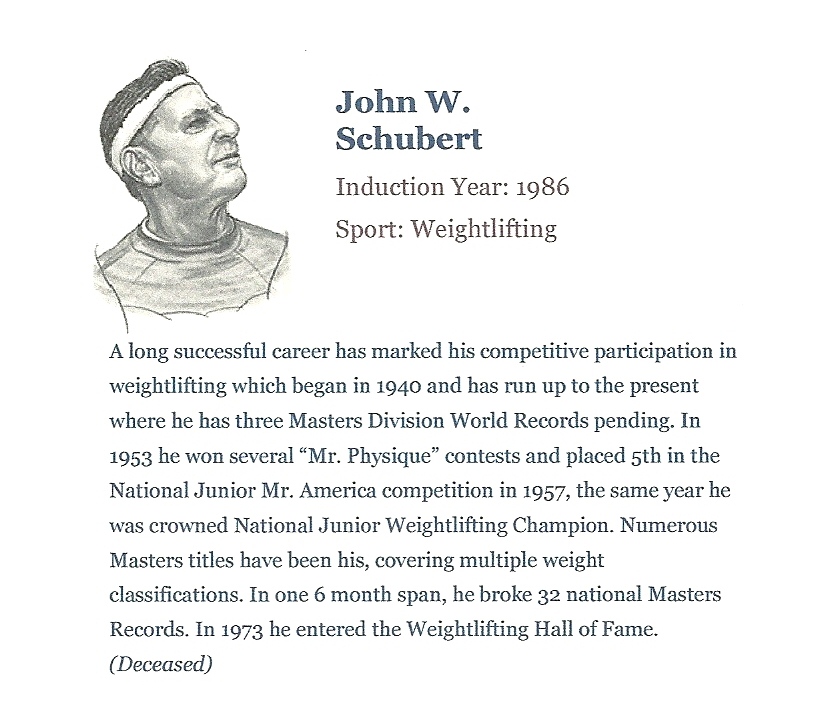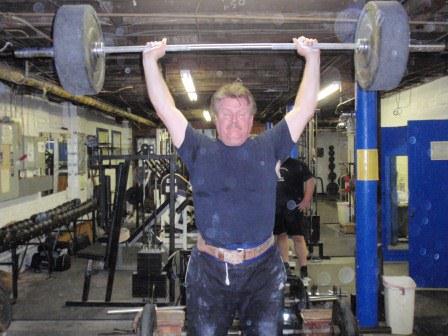The Schubert Lifts
by Al Myers
I never had the opportunity to meet John Schubert. I wish that I had. Since his passing, I have heard many stories from those that knew him about his positive influence on their weightlifting careers. John was a true all rounder – he not only competed in All-Round Weightlifting meets, but also was a long time Olympic Weightlifter as well as competing in numerous “physique” (old term for today’s bodybuilding competitions) contests. You hardly ever see that cross-over competing amongst weightlifters and bodybuilders today, but in John’s era it was not uncommon. These guys trained to “be strong” as well as “look strong”. John still has a couple of records in our USAWA Record List. In the 65-69 age group, 90 KG weight class, he has the record in the Feet in the Air Bench Press with a lift of 175 pounds, and the record in the Heels Together Clean and Press with a lift of 132 pounds.
John did leave a legacy in the USAWA with two official USAWA lifts named after him. In 2000, John presented these two lifts, the Schubert Clean and Jerk, and the Schubert Clean and Push Press, to IAWA for official acceptance. They were accepted by the IAWA that year, and became known as the Schubert Lifts in the USAWA in the beginning. However, in 2009 when the USAWA Rulebook was majorly overhauled, these lifts were renamed the Reflex Clean and Jerk and the Reflex Clean and Push Press, in order to match the lift names given to these two lifts in the IAWA Rulebook. I didn’t want the Schubert distinction to be lost, so I made special note in the first line of each rule in the USAWA Rulebook that the reflex lifts are “also known as the Schubert Lifts”. John Schubert’s name will be tied to the these two lifts in the USAWA forever! (actually this would be a good rule test question in the future!).
USAWA RULES FOR THE SCHUBERT LIFTS
A38. Reflex Clean and Jerk
This lift is also known as the Schubert Clean and Jerk. The rules of the Clean and Jerk apply with these exceptions. Once the clean has been made, the lifter must perform a jerk immediately from this position, whether the legs are bent or erect. There is no pause between the clean and the jerk.
A39. Reflex Clean and Push Press
This lift is also known as the Schubert Clean and Push Press. The rules of the Clean and Push Press apply with these exceptions. Once the clean has been made, the lifter must perform a push press immediately from this position, whether the legs are bent or erect. There is no pause between the clean and the push press.

